Introduction
In this post we want to explain what we mean when, on the home page, we say that, through our software products, we support WCM methodologies, i.e. World Class Manufacturing.
We are going to explain how and why WCM was born, how it works and what are the objectives it sets.
In this way, it will be clearer to understand the objectives that we set ourselves as a company in relation to our customers, i.e. what are the results that we propose to achieve with our software.
Happy reading!
WCM requirements
Before describing what World Class Manufacturing (WCM) is, it’s important to clarify what this new way of thinking about manufacturing was born from and why.
It is difficult to understand the birth and success of World Class Manufacturing without analyzing the period in which it’s been developed.
Obviously, we are talking about a period of time that is very recent and that we know very well, in which competition is increasingly “fierce” and economic trends are generally not very positive. The challenges to face, especially for those involved in manufacturing activities, are many and complex and all involve increasing efficiency, quality, reducing waste and investing in innovation and research.
Given this scenario, agreeing to implement World Class Manufacturing means totally rethinking the production process so that waste optimization is achieved not only during product transformation, but also in other “moments” of the production chain: even and especially in those moments when no added value is created for the customer. We are therefore talking about movements, stocks, controls, defects, waits, errors, repairs, maintenance, etc…
The concept of value therefore changes radically: all the phases that go together with the product, from the beginning to the end, must contribute to “create value”, that in order to realize something for which the customer is willing to pay. Each phase.
In essence, the philosophy of WCM is to try to create a product that can win in the marketplace. How?
High quality at a competitive price.
Competitive because it is the result of cost reduction, the result of waste reduction.
Definition of WCM
The WCM method was developed in the United States in the 1990s. In Italy, it was introduced by the FIAT group (now FCA) around 2005 and is considered the basis of the recent positive turnaround.
The WCM method is a coherent set of methodologies that have been implemented since the second half of the 1900s.
One methodology that should certainly be mentioned is the lean production or Toyota Production System which, through its principles, constituted a sort of revolution with respect to Henry Ford’s mass production. What lean production brings to the WCM is definitely customer orientation, producing only what the customer asks for (pull logic), creating a continuous flow that allows the product to leave the factory as soon as possible. The constraint to the customer, allows to generate output only when the customer requires the product, thus avoiding to create too much stock. The other lean principle of which the WCM has taken possession is the search for perfection: the WCM wants to improve the performance of the production process by eliminating waste and improving quality.
But it is not only quality that must be improved: safety, people’s working conditions and respect for the environment are also part of the improvement program.
A WCM approach involves strong interaction with the entire factory organization, and with all staff, who, it is important, are motivated:
“[WCM]… requires that workers identify themselves as belonging to a community and recognize knowledge as a common heritage, to be increased and managed together with the company, a heritage that everyone can draw on and to which everyone is called to contribute, and the resulting innovation as the fruit of that common heritage. [Leonello Tronti]”
Involving people also relates to the emphasis that WCM methodology places on the importance of safety: the injury of one person becomes a huge loss for the company.
So we will say, in summary, that WCM applies to all areas of production.
The aim is to optimize results by leveraging the idea of continuous improvement:
- Of processes;
- Product quality;
- Reducing production costs;
- Reduction of waste;
- Involvement and motivation of workers;
- Worker safety.
In addition to lean production, another methodology absorbed by WCM is Six Sigma.
This is a statistical term and indicates quality management based on control of mean square deviation (denoted by the Greek letter Sigma). The objective is to decrease the variability in production processes that can cause rejects and defects (3.4 defective parts per million), thus trying to achieve the highest possible quality level.
Another important methodology for WCM, also inherited from Toyota, is TPM, Total Productive Maintenance. This method aims at preventing machine failures rather than correcting them at the time of failure. In this way, machine stoppages and, consequently, production stoppages are drastically reduced.
Organization of WCM
The WCM is displayed as a temple held up by 10 technical pillars (pillars).
Each of these pillar deals with a theme and represents an area of intervention in the technical area:
- Safety – Workplace Safety
- Cost Deployment – Sources of Economic Loss
- Focus Improvement – Focused improvement of a specific problem.
- Autonomous Maintenance – Workplace Organization
- Professional Maintenence – Professional Maintenance
- Quality Control
- Logistic / Customer Services
- Early Equipment Management, Early Product Management – Acquisition strategy of the working means / processes
- Enviroment – Environment and exploitation of energy resources
- People Development – Development of personnel skills
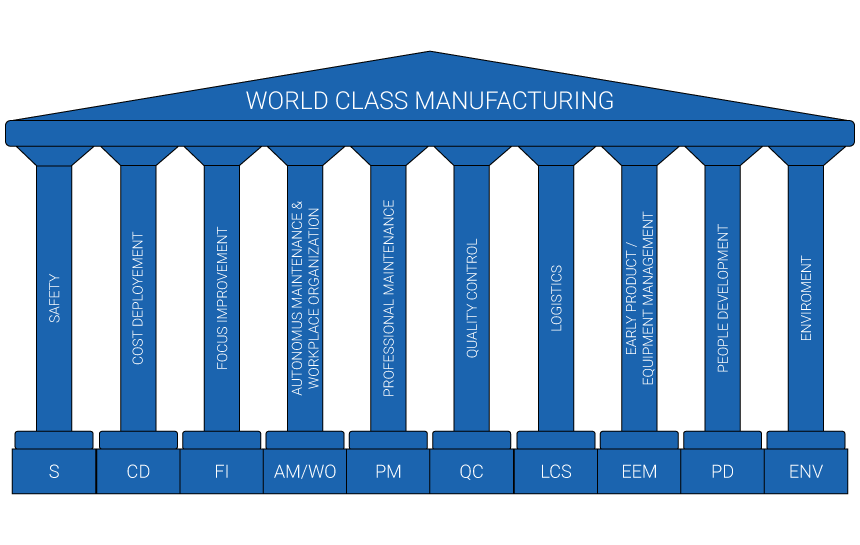
World Class Manufacturing pillars
These technical pillars are followed by 10 managerial pillars. The managerial pillars are the actions to be taken by the WCM leader or plant manager, aimed at improving the commitment and self-responsibility of the various people in charge of the individual pillars of activity.
- OPL One Point Lesson
- SOP Standard Operating Procedure
- SMP Standard Maintenance Procedure
- 4M MAN/METHOD/MATERIAL/MACHINE method of breaking down the problem to identify sensitive areas.
- 5W 5 WHY Ask and iterate questions about the reason of a phenomenon.
- 5W+1H WHAT/WHERE/WHEN/WHICH/WHO/HOW place the phenomenon within the scope of these items
- 3M objective assessment of the workplace
- KAIZEN specific improvement projects
- KPI Key Performance Indicators – objective indicators of results
- KAI Activity Indicators (see Kaizen)
The system provides for a series of periodic assessments by certified auditors to verify the results achieved by the plant. The best factories receive certifications that are of four types:
- bronze
- silver
- gold
- world class
WCM Objectives
The objectives of WCM is to reach the “zero” value in several areas: defects, inventory, inefficiencies, downtime, bureaucracy, customer dissatisfaction, etc…
Obviously, in order to achieve zero, improvement must be continuous.
But what is it that drives continuous improvement?
The customer.
The world-class company, as mentioned above, is customer-focused. It is aggressively focused on the customer in order to eliminate customer dissatisfaction. That’s why it’s necessary to get to know them and provide excellent service.
This is also why improvement must be continuous: the client is a dynamic entity. It changes continuously, its desires, its demands, its standards change. And the world-class company must change along with the customer and his questions.
The lessons of WCM
As a corollary to the objectives that WCM sets itself, there is the necessary involvement of personnel at all levels: everyone must be clear about the objectives.
And act accordingly.
Therefore, if there is one concept that WCM teaches us, perhaps indirectly, it is that a company’s greatest resource is not technology, but people: WCM involves all personnel at all levels, from the worker to the manager to the pillar leader.
To summarize what we’ve said, we could say that the WCM method means working on people.
And on their potential.
Our objectives
After this brief overview of WCM notions (there would be much to say and to go into in depth, but this is not the place), we hope we clarified the perspective through which we develop our products.
Providing software to support WCM methodologies means providing those tools that allow companies to improve production efficiency, to obtain objective data related to production, downtime, quality losses and everything that can allow a manager to make the best decisions in view of a continuous improvement of the plant’s production performance.
Working with world-class companies means adapting your products to the customer’s specifications. It means adapting your objectives to the customer’s WCM objectives.
This is what we do with customers like SCA Hygiene Products, Elica and VM Motori (FCA Group).
If you’re interested in the themes that we’re covering, follow and text us on Linkedin: we’d like to know YOUR opinion
You may want to use something even quicker, in that case, follow us on Telegram!

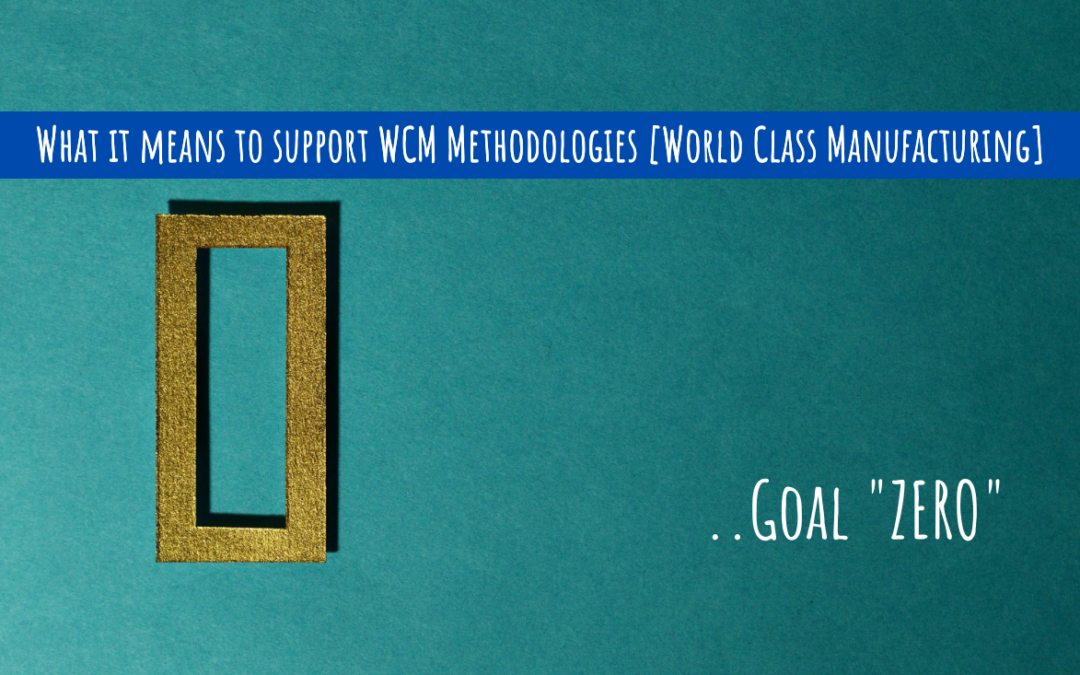

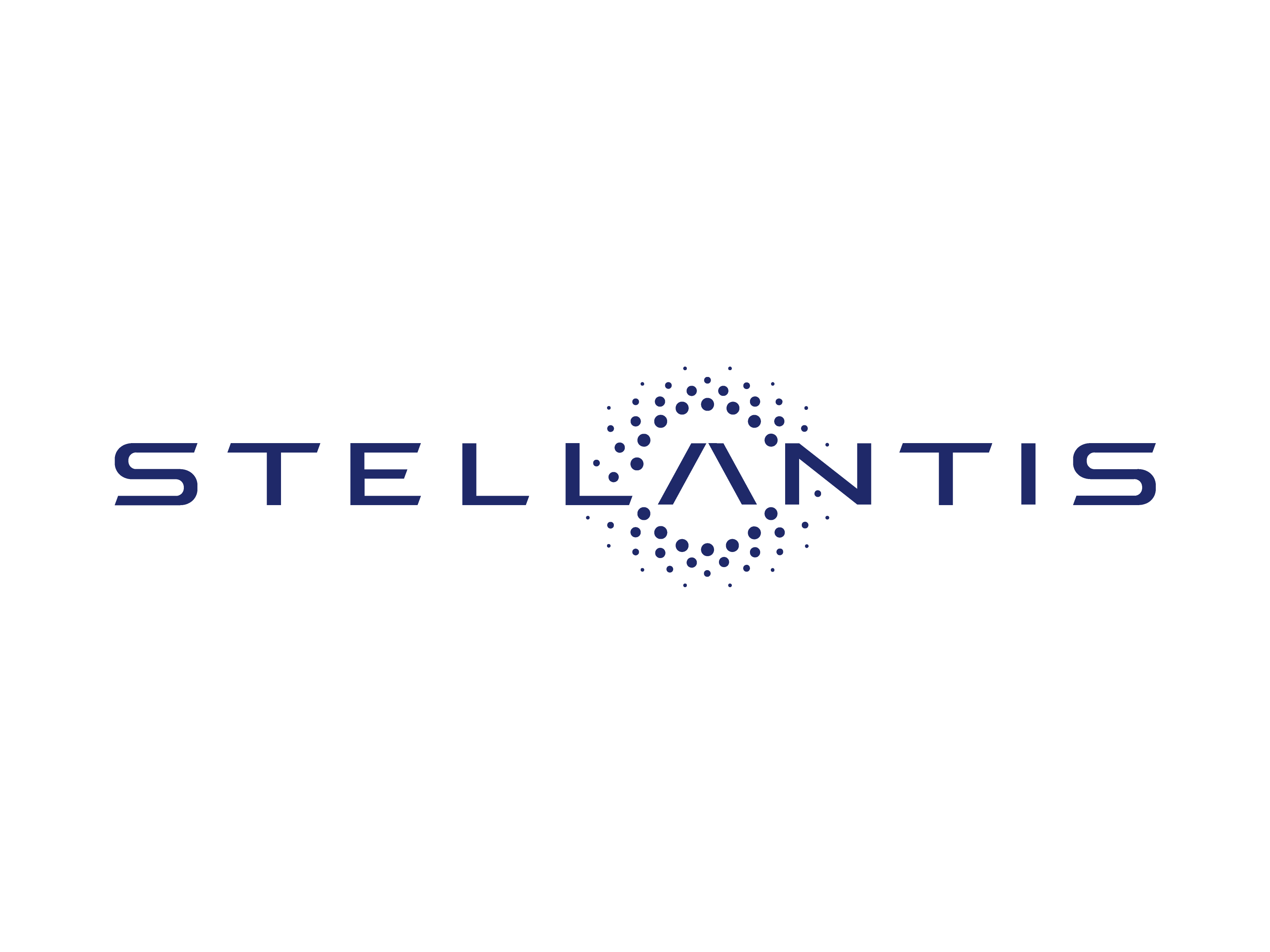

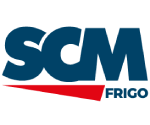





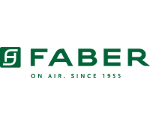



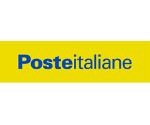

Recent Comments